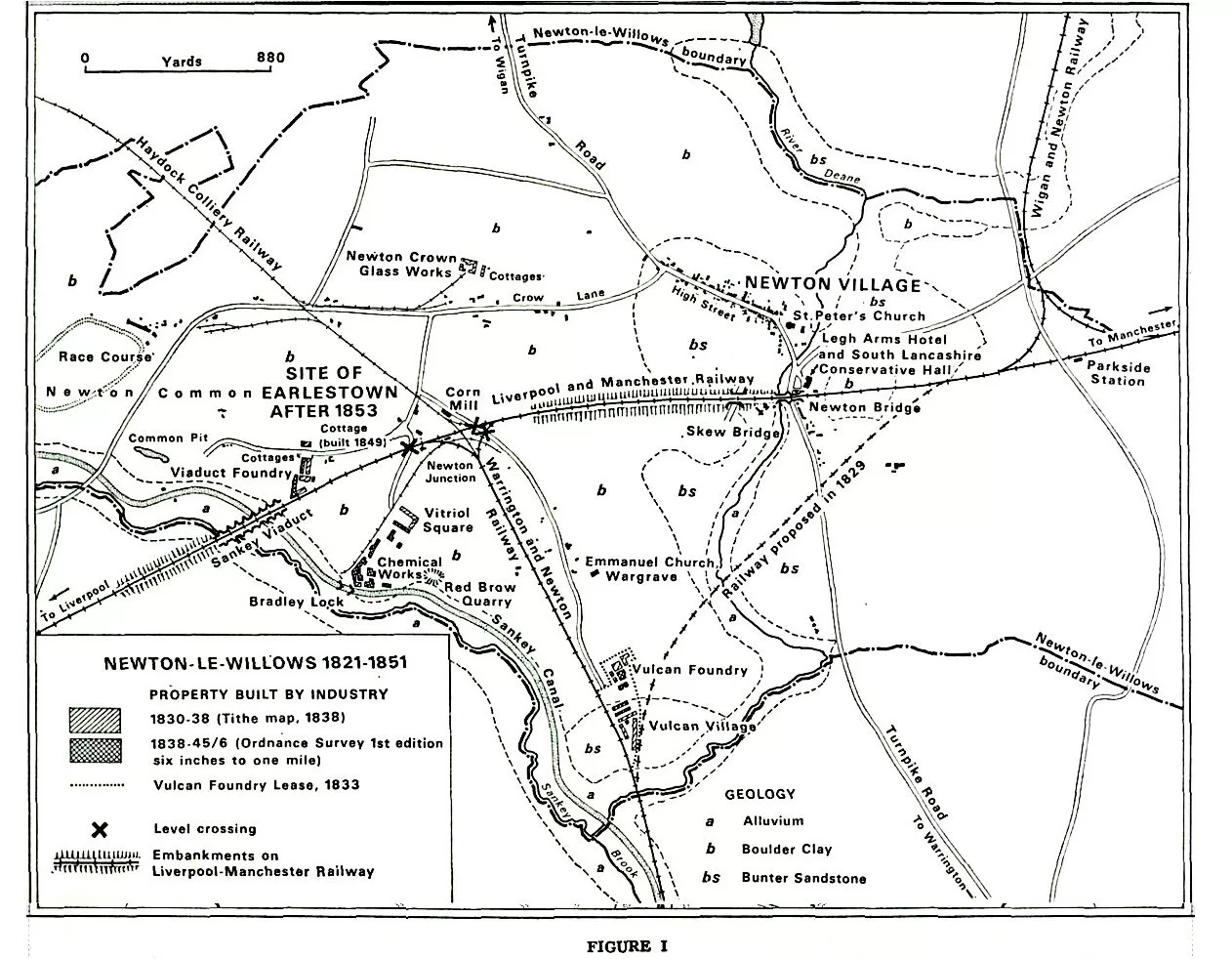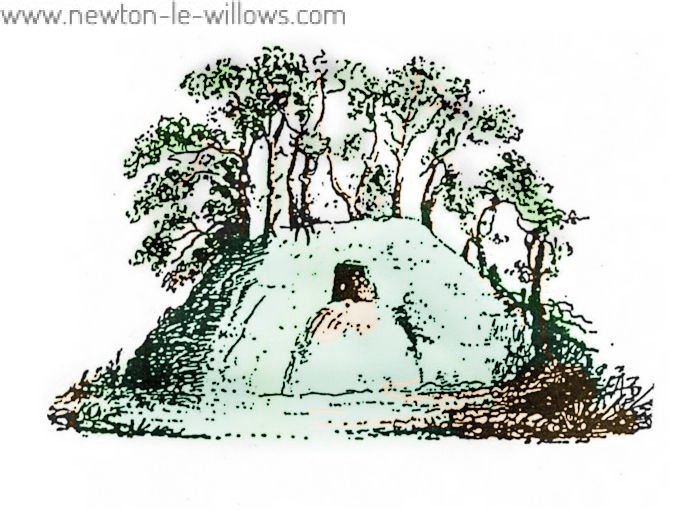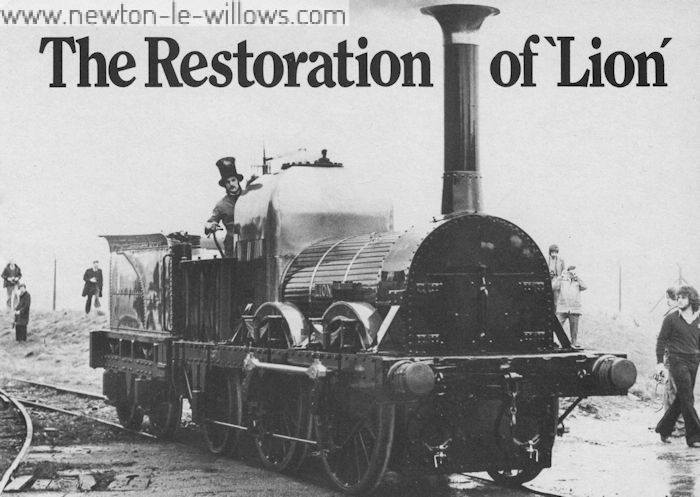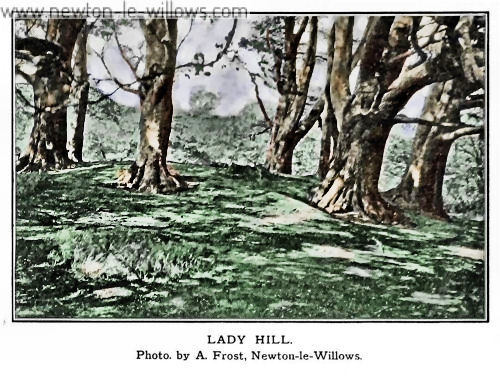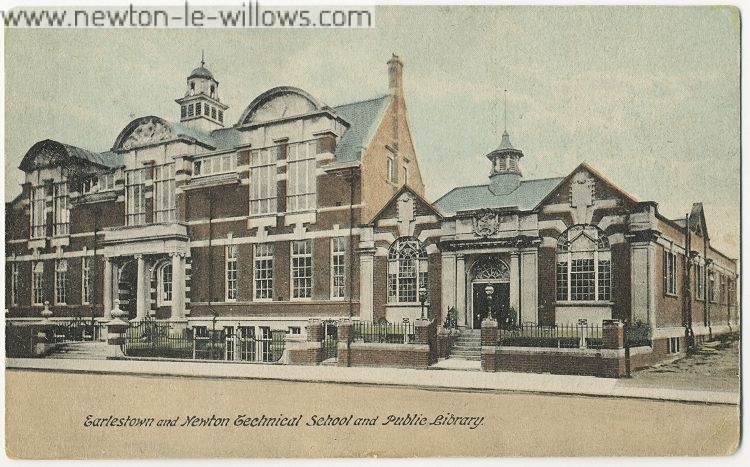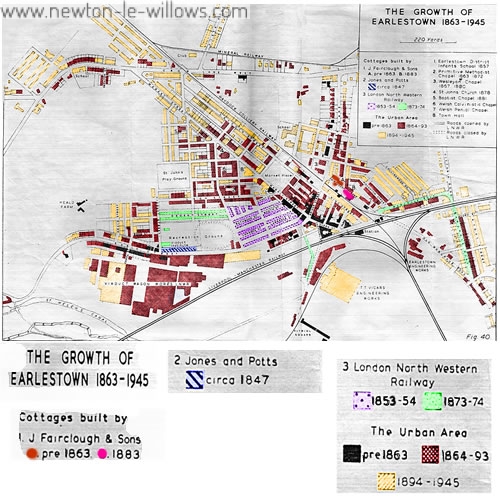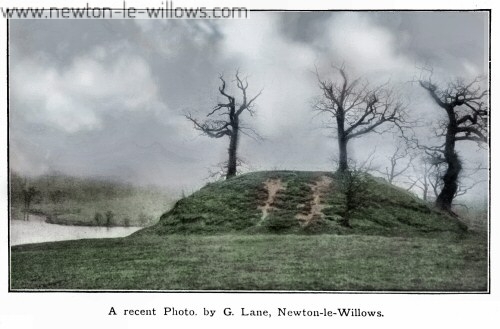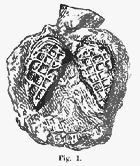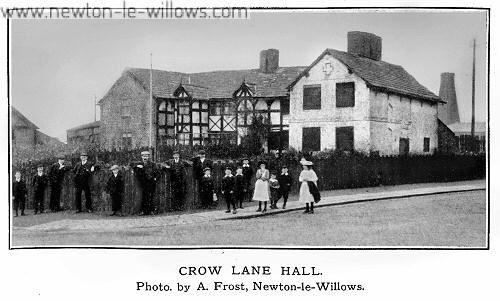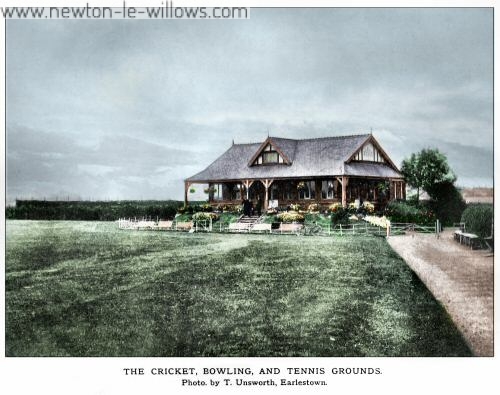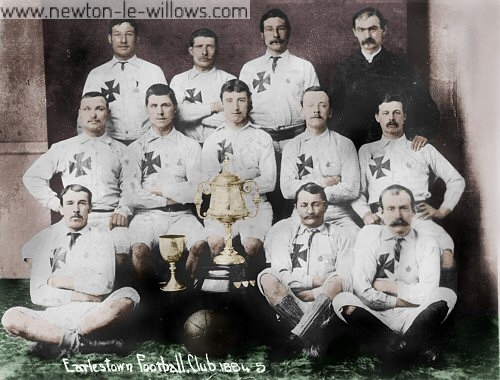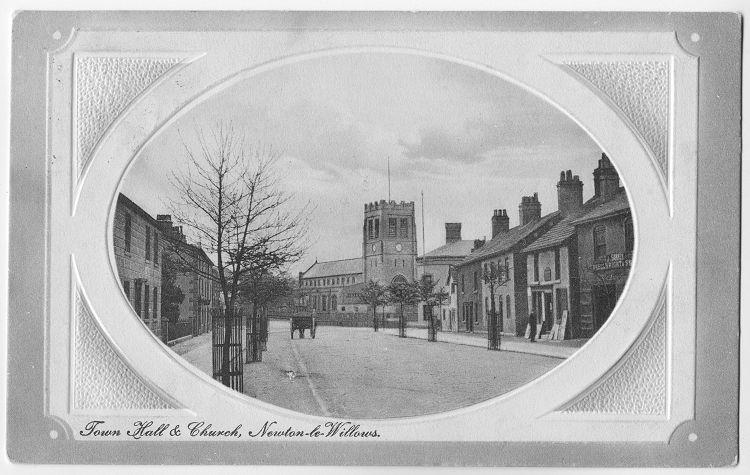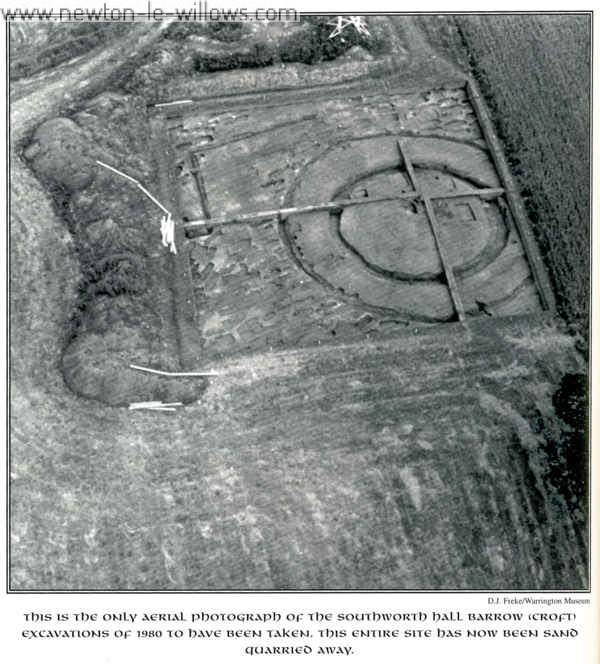The impact of the Liverpool and Manchester Railway on: Newton-le-Willows 1821-1851 Newton le Willows is situated on the lowlands of south Lancashire, on the route to the north by way of Warrington, Wigan and Preston. From Saxon times until 1830 the village of Newton was in the east of the township, situated on an inlier of bunter sandstone overlooking a crossing place on the River Deane; this sandstone area provided a dry site and a water supply from shallow wells. The remainder of the township is a broad spread of…
Read More >>Tag: Newton-le-Willows
CASTLE HILL, Newton-le-Willows
1980’s Archaeological Excavations. he text for this post is transcribed from two pamphlets that where produced at the time of the 1980s digs at Castle Hill, to aid public understanding of the work that was being carried out by the archaeologists from Liverpool. Pamphlet #1 Having received permission from the Department of the Environment to excavate a scheduled ancient monument, a North West Archaeological Trust Community Programme is now in the process of investigating an earthwork at Castle Hill, Newton-le-Willows. Although this mound is a recognisable landmark and still stands…
Read More >>The Vulcan Works – Making the Lion roar again
During the early part of 1979, Ruston Diesels Limited, the Company then occupying the historic Vulcan Foundry site, agreed to restore the locomotive Lion which had been a static exhibit for many years in the Transport Gallery of Liverpool Museum. This was to provide project work for apprentices and graduate trainees, and to enable Lion to participate in the forth-coming ‘Rocket 150’ celebrations. On 4 April, the engine arrived at Ruston’s looking rather incongruous on the back of an articulated lorry and during the next few weeks it was stripped…
Read More >>Lady Hill – Newton-le-Willows
I noted that some questions have been asked about Lady Hill, a barrow or not a barrow? good question, I do not think its ever been investigated, The Rev Simpson conducted an investigation into the Castle Hill barrow/mound in the 1840s and it was also investigated in the c1988, but as far as I can discover, no investigations have been done on the the nearby Lady Hill mound. I have transcribed the following from the 1916 Vol II, J H Lane book on Newton. Its a description of the walk…
Read More >>The Public Library – Crow Lane, Newton
The first library in Newton-in-Makerfield was, we believe, the one in connection with the Mechanics Institute held at the Printing Works. It contained some 400 volumes, which had a fair number of readers. Adult members paid 2s. 6d per quarter, 1s 6d. to the library, and 1s to the newsroom; junior members paid 1s. 3d. per quarter, 9d to the library and 6d to the newsroom. In the first quarter (April, May, June, 1853) there were 41 members. In 1868 the now extensive library in connection with the Viaduct Institute,…
Read More >>Newton le Willows: 1830 – 1945
I have spent the last few hours transcribing a thesis by Lynton J. Smith which I was loaned by Geoff Simm into a text file, so that It could be used here into the website, Its a splendid work on the growth of Newton le Willows & Earlestown between 1830 – 1945, at the moment the thesis is missing a few diagrams, but all the text is here, I will add some maps later. NEWTON LE WILLOWS: URBAN GROWTH UNDER THE MICROSCOPE 1830-1945 The spread of urban areas in this…
Read More >>Castle Hill by the Rev. Edmund Sibson
The following account was written in 1843 by the Rev. Edmund Sibson, once Curate at Winwick, and after- wards Vicar of St. Thomass, Ashton-in-Makerfield, and is entitled “An Account of the Opening of an Ancient Barrow called Castle Hill, near Newton-in-Makerfield, in the County of Lancaster” This Photo of Castle Hill is from the 1916, Vol II, History of Newton in Makerfield, by J H Lane. edited and coloured from the original by Steven Dowd Mr Bainess Description. “At the distance of half a mile from and to the N.…
Read More >>Antiquarian notes on our Neighbourhood
Historical and antiquarian notes on Warrington and its Neighbourhood By John Babson, Esq. The object of the present communication will be to combine as well as I can the evidence from historical records, local traditions, and existing remains, so that each may throw light upon the other, and afford something like a continuous history of the district you have passed through this afternoon. The earliest remains we have to notice are the Tumuli, of which we have two marked on the Ordnance Map, to the east, and a little to…
Read More >>The Barons of Newton
Devices and Armorial Bearings of the Barons of Newton and their Kindred. This is a fragment of the seal of Warin Banastre, son of Robert Banastre, and heir to his brother Richard, who died 23rd April, 1205. This seal was appended to a grant in ” Waletona,” to one Alured, and is amongst the muniments of the Leghs of Lyme, which have supplied most of the seals here engraved. fig. 1 The deed to which this seal is appended being without date, it is uncertain whether it was used by…
Read More >>Crow Lane Hall & Newton Serjeants
This building, probably the oldest in the township, was formerly a moated grange, vestiges of the moat being visible in the boyhood days of some of our septuagenarian residents. It is said to have been the abode of the serjeant (or bailiff) of the lord of the manor, a post of great importance in olden days, and corresponding to that of sheriff of more recent times. Its very probable that the Serjeants (or Sergeants as the name later became), who resided at Crow Lane Hall in the 15th, 16th, and…
Read More >>Newton Cricket, Bowling, and Tennis Club
On the April 13th, 1858, a meeting was held in the Assembly-room, High-street, Newton-le-Willows, for the formation of a cricket club, W. Mercer, Esq., in the chair. A sum of upwards of £50 was announced as subscribed in the room. Officers were there-upon appointed, with W. J. Leah, Esq., as patron ; W. Mercer, Esq., president; Dr. J. W. Watkins, secretary ; and George McCorquodale, Esq., treasurer. On May 30th following the opening game was played. The ground was in excellent condition, and there was a good attendance of members.…
Read More >>Some Earlestown Sporting History
My father, a supporter in the 1880s often spoke to me about the team in those early days. The playing field was at the back of the Swan Hotel, on Newton Common. He was present on this ground when the famous Preston North End Invincibles played Earlestown and beat the local team 19-0. I understand the record score for the Noah End was beating Hyde 26-0.! Earlestown also played Everton in the 1880s can you imagine it? A team from Earlestown playing against Everton in a cup final. Well, that…
Read More >>Newton & Earlestown in 1895
I do not guarantee that my transcription doesn’t include some pretty basic mistakes, apart from my poor typing ability and bad spelling, some pages were very marked making them hard to read. I hope this transcribed text will be well received, its easily searched with the find on page facility included with most any web browsers from the browsers edit menu. There are two sections to this article, Newton-le-Willows is the top one, and Earlestown is the lower one, Hope you find them useful. NEWTON-LE-WILLOWS (SEE ALSO EARLESTOWN), INCLUDING ASHTON-IN-MAKERFIELD…
Read More >>Earlestown & Newton in 1890
And now let us take a walk round Earlestown and Newton and see what it was like about 1890. Immediately to the left of Earlestown Station was a large open space where the shops now stand and which was a common playground for the youth of the neighbourhood. That side of the street has changed very little, except that the shops at the top have all been altered and had new fronts put in to meet changed conditions. On the other side, starting at the bottom, there was Mr. Attfields…
Read More >>Southworth Burial Mound
Southworth Burial Mound Take Myddleton Lane (the ‘Eastern avenue’ off the Winwick mound) out of Winwick towards Culcheth and it will lead down the ley line towards Croft where it becomes Southworth Lane as it passes the ancient Southworth Hall over the M6 motorway. In the fields to the right Victorian Historical Journals from the Warrington Historical Society mention there may have been the burial mounds though these are now lost being ploughed flat, and in the field to the left on the Newton side, between the motorway and Southworth…
Read More >>